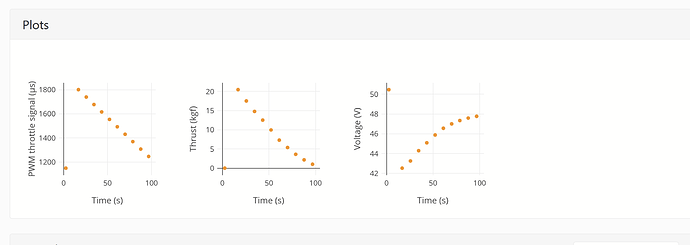I’d advise running the Compass/Motor calibration too, check the instructions and stay safe!
ESC calibration was done?
Z axis vibrations are getting up a bit but not bad, maybe keep an eye on that.
These are a starting point, some are similar to your settings, but the Filters are different.
ACRO_YAW_P,1.30
ATC_ACCEL_P_MAX,27500
ATC_ACCEL_R_MAX,27500
ATC_ACCEL_Y_MAX,11700
ATC_RAT_PIT_FILTD,9.00
ATC_RAT_PIT_FILTE,0.00
ATC_RAT_PIT_FILTT,9.00
ATC_RAT_RLL_FILTD,9.00
ATC_RAT_RLL_FILTE,0.00
ATC_RAT_RLL_FILTT,9.00
ATC_RAT_YAW_FILTD,0.00
ATC_RAT_YAW_FILTE,2.00
ATC_RAT_YAW_FILTT,9.00
ATC_THR_MIX_MAN,0.10
AUTOTUNE_AGGR,0.05
BATT_ARM_VOLT,44.30
BATT_CRT_VOLT,42.00
BATT_LOW_VOLT,43.20
BATT_FS_CRT_ACT,1
BATT_FS_LOW_ACT,2
INS_ACCEL_FILTER,20.00
INS_GYRO_FILTER,18.00
MOT_BAT_CURR_MAX,50.00
MOT_BAT_VOLT_MAX,50.40
MOT_BAT_VOLT_MIN,39.60
MOT_THST_EXPO,0.79
MOT_THST_HOVER,0.20 <–initial low value, hover learn will fix it
PSC_ACCZ_I,0.50
PSC_ACCZ_P,0.25
After basic Testing and/or Autotune, you can set
ATC_THR_MIX_MAN,0.50
AUTOTUNE_AGGR,0.075
and run Autotune again - but depends how a craft of that size handles AUTOTUNE_AGGR,0.05
You can copy/paste those parameters into notepad and save as a .param file and then load it via MissionPlanner to save a lot of time and typos.

